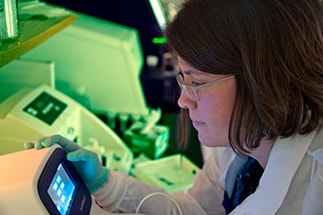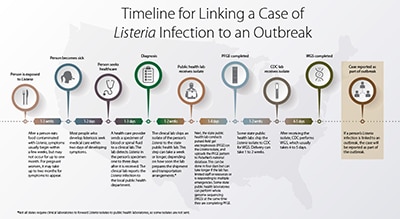Surveillance
Surveillance provides valuable insights into the foods, germs, and settings linked to foodborne diseases. For more than 30 years, CDC has conducted surveillance for Listeria infections to learn more about the germ, how it causes disease, how it’s spread, and other information to help protect the public from illness. Each of the CDC systems monitoring Listeria serves a different purpose. Together, they provide a comprehensive view of listeriosis in the United States.
- Listeria Initiative Surveillance Overview [PDF – 2 pages]
- Listeria Annual Summary 2019
- Listeria Annual Summary 2014 [PDF – 8 pages]
- Listeria Annual Summary 2013 [PDF – 8 pages]
- Listeria Annual Summary 2012 [PDF – 9 pages]
- Listeria Annual Summary 2011 [PDF – 7 pages]
- Listeria Annual Summary 2010 [PDF – 5 pages]
- Listeria Annual Summary 2009 [PDF – 5 pages]
- Listeria Annual Summary 2008 [PDF – 5 pages]
- Listeria Annual Summary 2007 [PDF – 5 pages]

We’re using real-time whole genome sequence-based Listeria surveillance to solve outbreaks and improve food safety.

Have you ever wondered why it takes a while to hear about cases of Listeria infection after a person gets sick? Or why the number of cases linked to an outbreak can increase for weeks after measures are taken to stop the outbreak? A series of events occurs from when someone eats a food contaminated with Listeria to when public health officials can determine that the person is part of an outbreak. Find out more